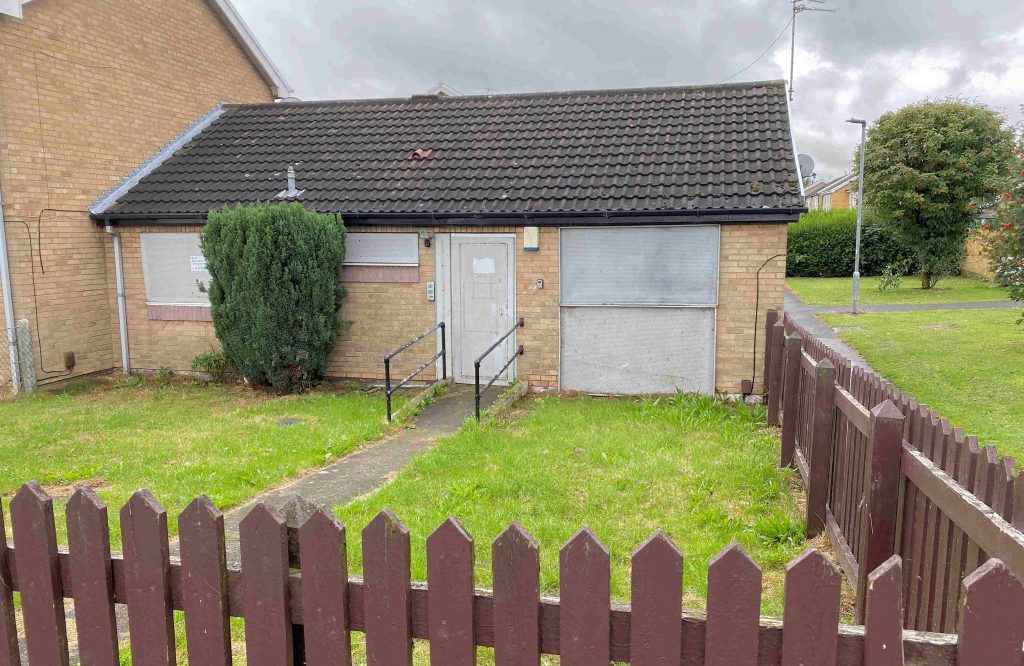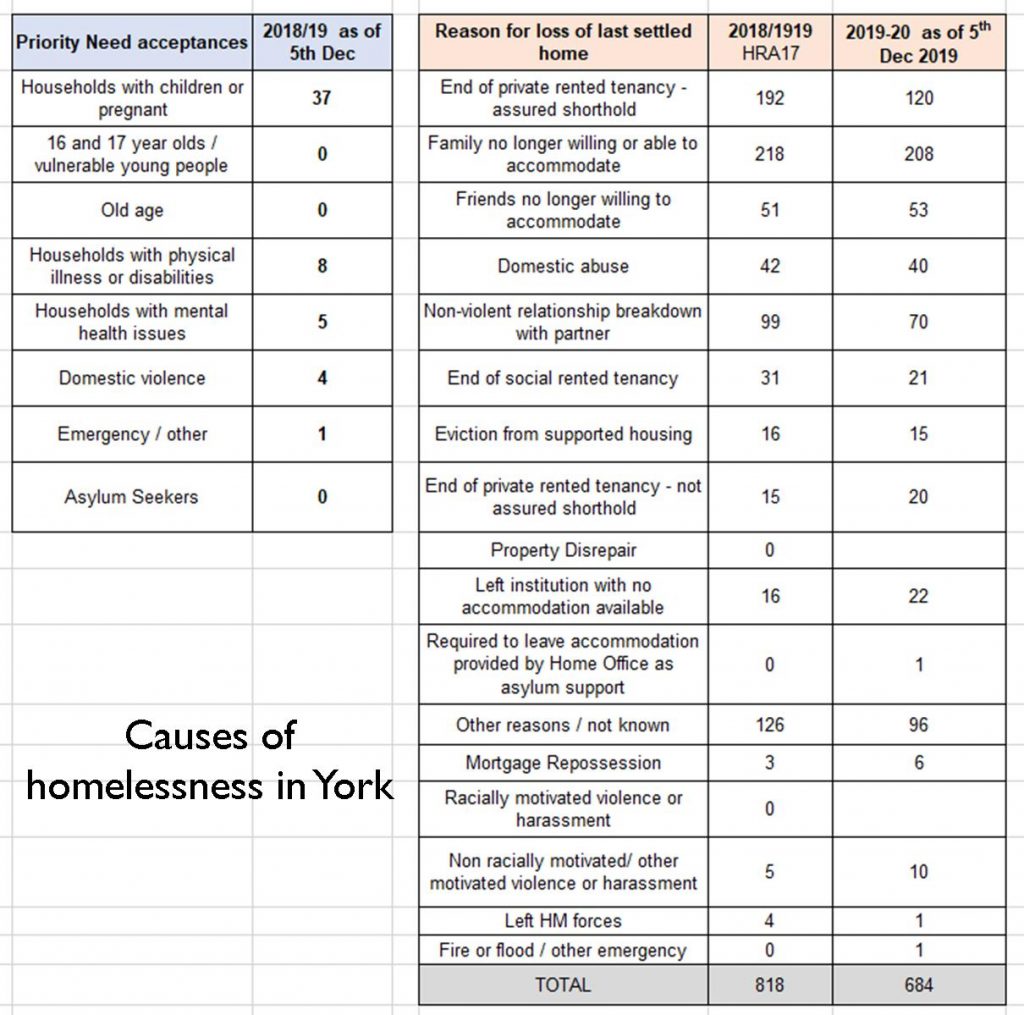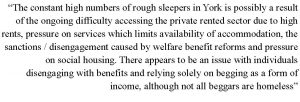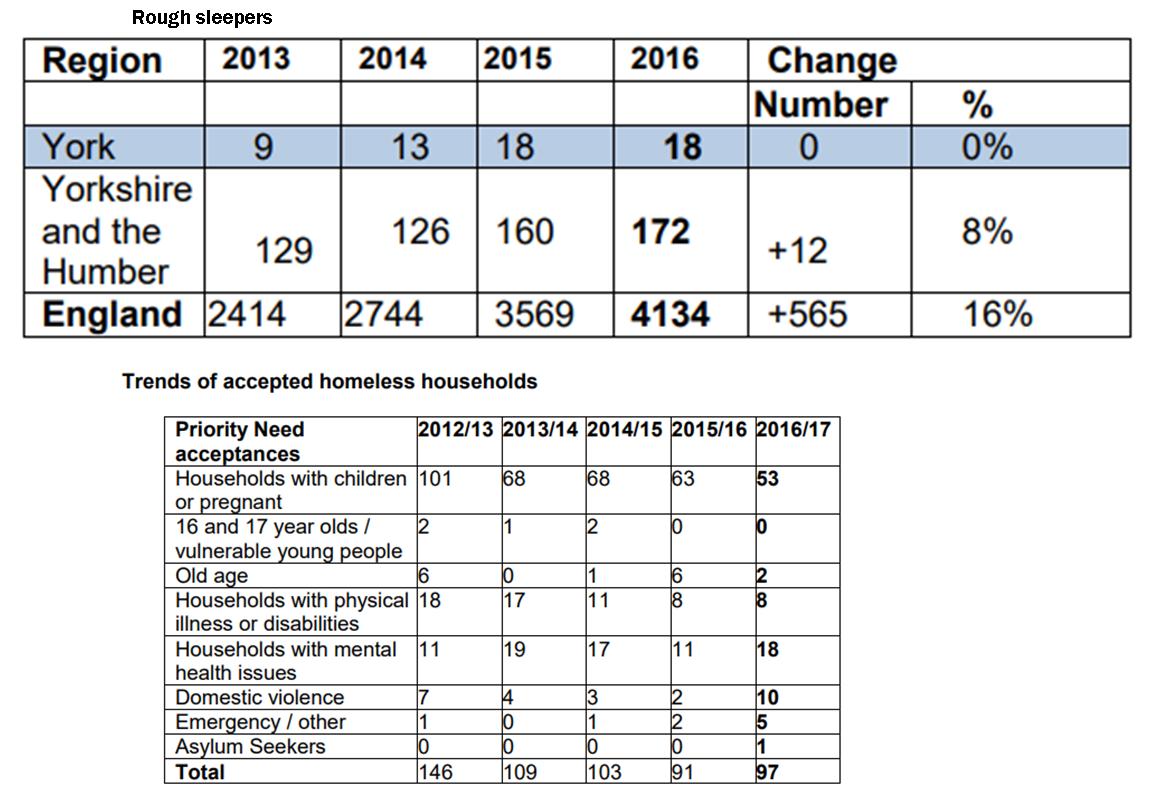Despite the COVID crisis, the feared upturn in “rough sleeping” in York has so far not materialised.
A report to a meeting next week says, “As part of the response to COVID-19, the team worked hard to ensure everyone had a place to sleep which was safe and minimised the risk of infection. This included utilising otherwise empty hotel accommodation which was supported by funding from central government. These relationships remain in place and can be utilised if needed as part of our winter response”.
“Any person sleeping rough is one too many. However, we continue to make great progress in reducing the number of official rough sleepers. The number of rough sleepers at the last official count was 3, down from 7 the previous year”.
Ten emergency beds are available during the current winter period. This is down from last years total of 29 because of the need to maintain social distancing. The Council says it can bring back into use some of its empty property if necessary (Ordnance Lane, Holgate Road, Crombie House etc)
The main groups for whom the Council has provided letting priority are households with children and those with mental health issues. So far this year 39 households have fallen into those categories.
Most homerless presentations result from relations or friends no longer being willing to accommodate the individuals concerned. This has accounted for 302 presentations so far this year.
Other reasons for homelessness included the end of private tenancies (82), relationship breakdown 122), eviction from supported housing (22) and those leaving institutions (38).
The report presents a picture of officials working hard in a difficult area which has been further complicated by COVID.
The report doesn’t comment on the large number of empty council houses and which could contribute to a speedy reduction in the numbers living in temporary accommodation. It also remains unclear why so many other Council properties, like former care homes, have been left empty for – in some cases – several years.

Greater problems may be on the horizon. Higher unemployment and the end to protection from eviction for private sector tenants could see a significant increase in homelessness in the City.
In some estates an increase in Anti Social Behaviour could eventually lead to increased evictions with an unknown “knock on” effect.
So still a lot to do to get all aspects of the City’s housing services back to an acceptable standard.



 The number of people sleeping rough in the city has reduced this year from 29 to nine, following work by City of York Council and partners.
The number of people sleeping rough in the city has reduced this year from 29 to nine, following work by City of York Council and partners.
